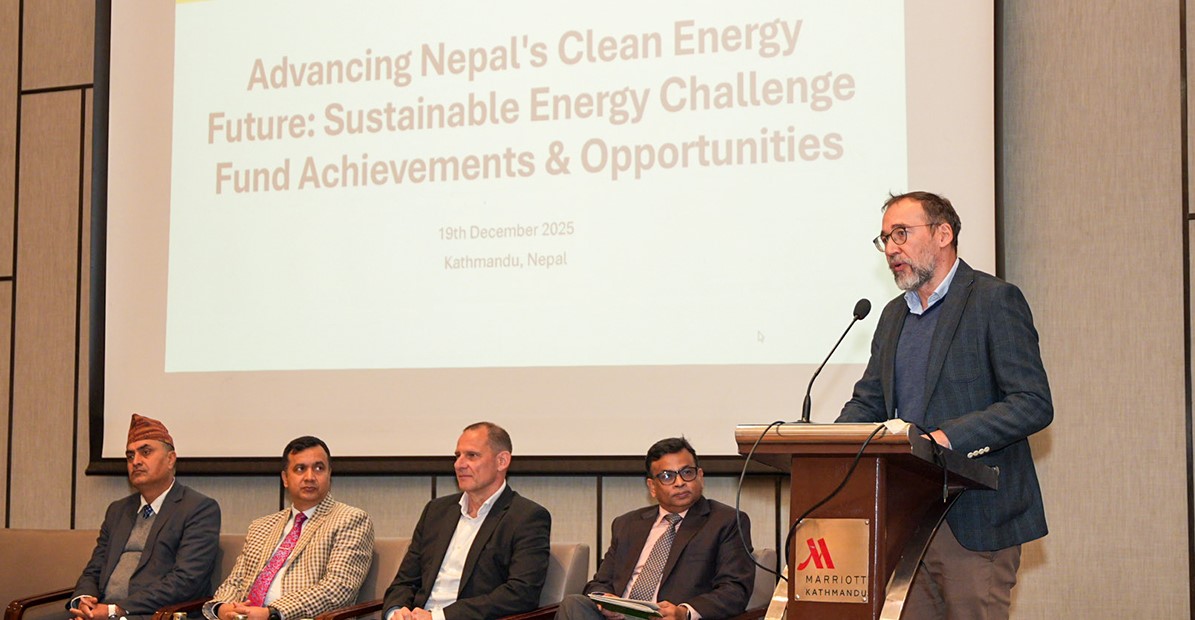Energy Update
Urgent Call for Government Action for inviting 'Green Fund'

The 18th-century industrial revolution stands as a turning point in the economic development of Europe and North America. It propelled agrarian economies into a new era, thereby transitioning to an industry-based manufacturing system. In parallel, global temperatures have consistently increased since 1800, primarily driven by the emission of greenhouse gasses such as methane and carbon dioxide, marking the onset of the era of human-induced climate change. The transition from burning fossil fuels to utilizing petroleum oil and wind witnessed an ongoing release of CO2, thereby contributing to the sustained increase in global temperatures.
Over time, the world witnessed numerous adverse impacts brought about by climate change. The rise in atmospheric pollution contaminates the coastal and marine water bodies, as approximately 30% of carbon dioxide emitted into the atmosphere gets absorbed by the sea.

Furthermore, swampy lands are drying up, and snow-covered mountains are melting, turning into mere dark boulders, contributing to the rise in sea levels. News coverage consistently highlights the hardships locals experience as a result of these changes.
There is an intense competition among major global economies to secure the top position. Consequently, in 2023, there was a surge in carbon emissions due to the extensive use of coal as the primary energy source. Due to unregulated economic activities, there has been a significant impact on both the atmosphere and the planet as a whole. The far-reaching consequences of climate change have posed threats to the lives of animals, plants, and humans alike.

Most of the effects of climate change in recent years have been felt in the Hindu Kush Himalayan region, which spans from Afghanistan to Tajikistan and lies between Pakistan and Myanmar. The assessment conducted by the International Center for Integrated Mountain Development (ICIMOD) in 2023 revealed that glaciers are rapidly melting, the frequency of snowfall is decreasing, and the permanent snow (permafrost) is melting. This is generating an unparalleled impact on countries, societies, and biodiversity both within and outside South Asia. Sea level rise is submerging islands and low-lying areas in coastal nations like the Maldives. The frequency of natural disasters, including unseasonal rainfall, floods, droughts, incessant rains, and partial rains, has increased in the region. Notably, Nepal observed blooming of rhododendron flowers during off seasons and the imminent extinction of vegetation like Paiyun (Prunus cerasoides).
With indiscriminate industrialization and an imbalanced ecological cycle, concerns about the crisis of our own existence are growing. Globally, efforts are being made to mitigate climate change. A recent conference in Dubai aimed at addressing the effects of climate change brought together 198 member states. A collective commitment to gradually reduce fossil fuel use was endorsed at the gathering.
According to the International Energy Agency, the USA produces the most carbon emissions from coal-fired electricity, followed by China and India. Nepal's global contribution to carbon emissions is almost negligible, standing at 0.027%. However, as Nepal shares its borders with China and India, the carbon emissions originating from these two nations have a direct and substantial impact on Nepal's environment. Mountain ranges and the environment of Nepal have suffered irreparable damage. Yet Nepal has failed to persuade the global forum about the responsibility to be assumed by countries in order to compensate for their notable carbon emissions while compensating low contributors.
Intergovernmental Panel on Climate Change (IPCC) set a goal in 2018 to limit the global temperature increase to 1.5 degrees Celsius, aligning with the Paris Agreement. This goal implies attaining net zero carbon dioxide (CO2) emissions globally by the year 2050. Nepal has committed to reaching the goal by 2045. China and India, ranked second and third, respectively, have committed to reaching this goal only by 2060 and 2070.
The key point to remember here is that Nepal will still bear the burden of carbon emissions from China and India for an additional 25 years, even if it meets the target within the specified time frame. Thus, Nepal should seek compensation from these countries, holding them accountable for any damages they may have caused during this time period. Additionally, Nepal needs to make every effort to position hydropower within renewable energy boundaries, thereby attracting green funds to meet its goals.
Adequate initiatives have not been undertaken to secure the necessary "green funds," including green bonds, climate finance, and green incentives, aimed at mitigating and adapting to the impacts of climate change. The Nepalese government has, in this context, been slow to take effective diplomatic steps, which is its primary responsibility. Additionally, various agencies, private sectors, and NGOs in Nepal committed to environmental and climate mitigation must take appropriate steps in order to attract financial support.
The promotion of citizen awareness is also crucial for preventing climate change, minimizing its effects, adapting plant and animal lives accordingly, and safeguarding the Earth. An effective way to accomplish this is to develop and implement a comprehensive curriculum integrating climate change across all levels of education.
A substantial initiative was taken by the Curriculum Development Center in December 2020 by designing and releasing a climate education curriculum aligned with Nepal's academic objectives. There are still a limited amount of effective instructional materials on climate change in the market, despite the need to raise awareness about climate change impacts, reduce disaster risks, and enhance the ability to deal with such challenges. University-level textbooks contain some content, but it has been difficult for this knowledge to be effectively translated into a public campaign. Besides, community awareness programs have also been implemented.
Moreover, a significant concern is the absence of a designated government body addressing climate change issues in Nepal. Currently, the Ministry of Forests and Environment's Climate Change Management Division is responsible for this duty, but its effectiveness is questionable. The difficulty primarily stems from the challenges in coordinating at the inter-ministerial level, especially regarding energy-related matters associated with climate change. Considering this is a multilateral challenge, it has been suggested to establish an entity or mechanism to represent all ministries. Climate change experts advocate for a standalone ministry that focuses exclusively on the issue. Nevertheless, concerns about its effectiveness and possible impact as a 'white elephant' draining the country's resources must not be overlooked.
As an example, in 2020 the government created the Climate Change Policy and set up a Climate Council under the Prime Minister's leadership. To date, the council has not convened a single meeting. There are also "inter-ministerial coordination committees" under the coordination of the Ministry of Forests and Environment, but none have been activated. This implies that, even if the Ministry of Climate Change is established, it might face similar challenges to other government departments.
Considering examples from India and Bangladesh, where a single ministry effectively manages issues related to forest, environment, and climate change, it suggests a successful model. Thus, it may be a good idea for us to appoint necessary experts and develop a climate change mechanism under the Ministry of Forests and Environment. It is incumbent on Nepal to effectively raise the issue of climate change both domestically and internationally, ensuring that the existing system is capable, competent, and resource-rich.
This Editorial is taken from 5th issue of Urja Khabar Semi-annual Journal Publish on 17th December, 2023
Conversation
- Info. Dept. Reg. No. : 254/073/74
- Telephone : +977-1-5321303
- Email : [email protected]













